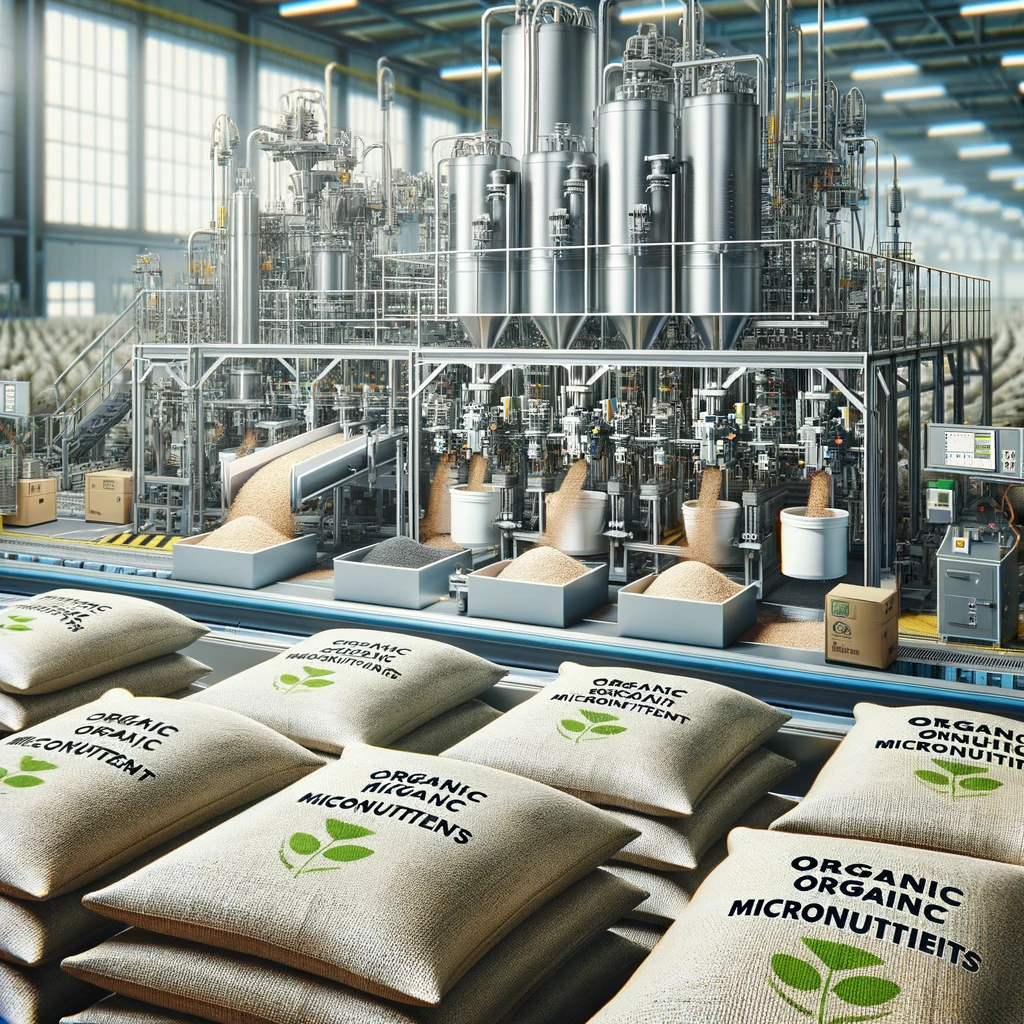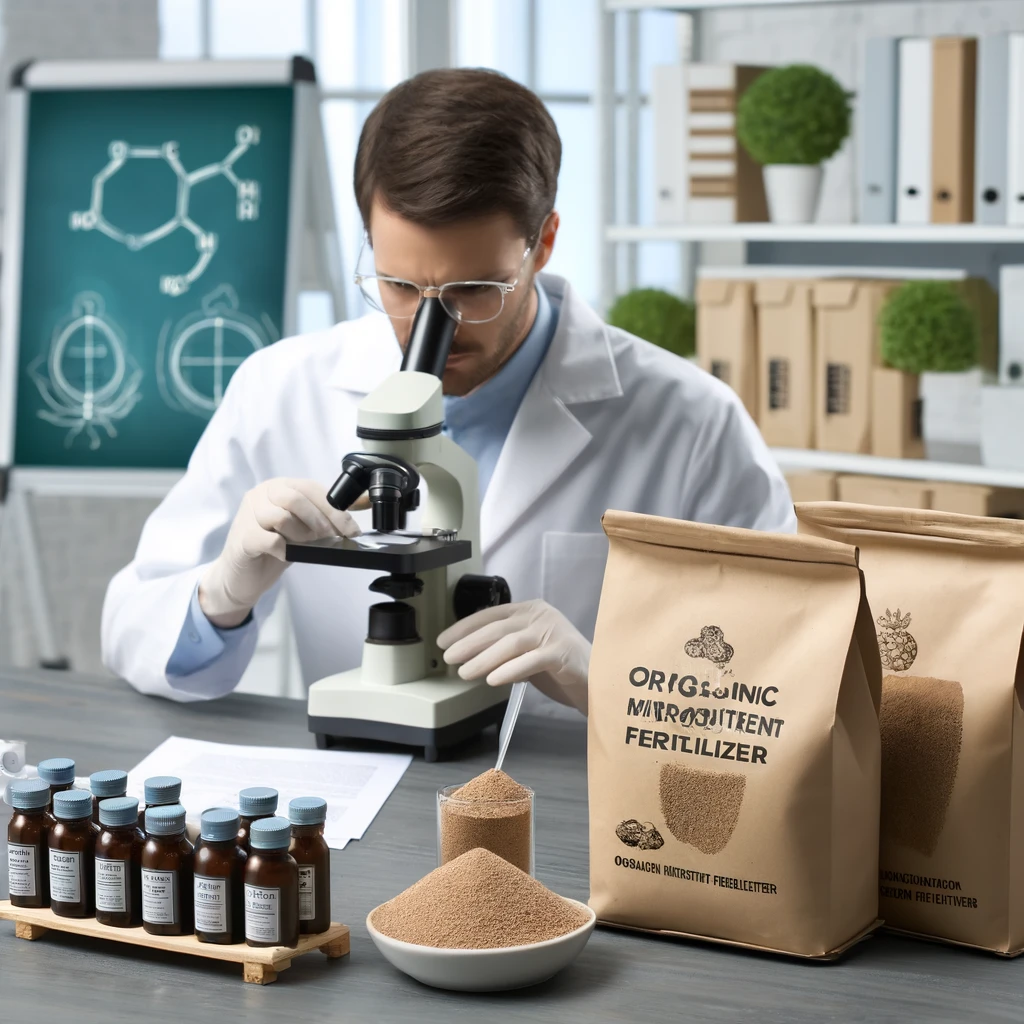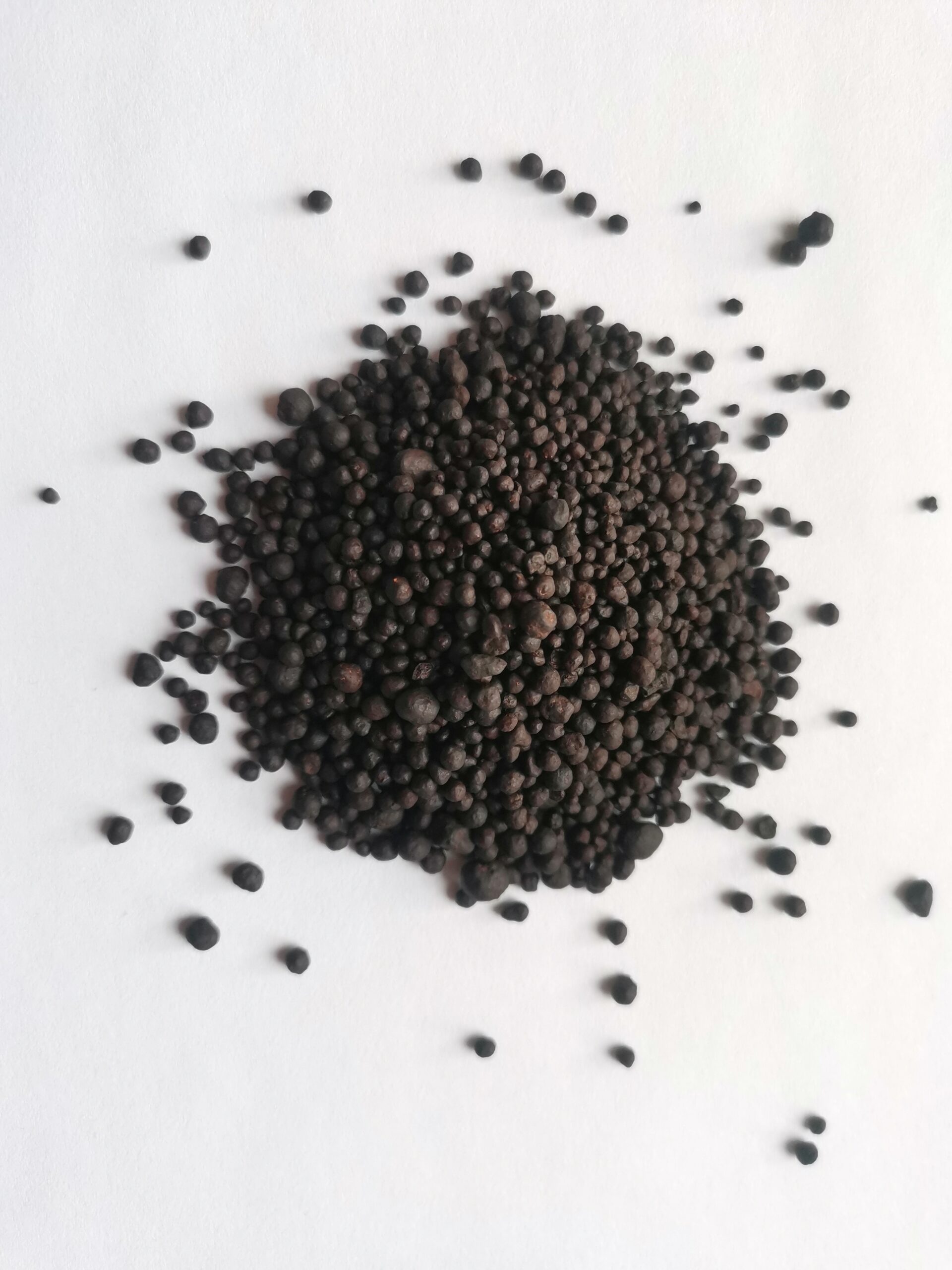Introduction to Organic Micronutrients Fertilizers
In this regard, organic micronutrients fertilizers are critical, as they supply the vital nutrients that plants require in a small quantity for their continuous growth and development for food security, yet they are generally not sufficiently available in the soil. Plants have a high demand for key micronutrients such as iron, manganese, zinc, copper, molybdenum and boron that play pivotal roles in the most essential physiological processes in plants. Without micronutrients, there would likely be no agriculture.
Iron is needed to build chlorophyll, as well as being used as a catalyst for energy transfer reactions in plants. Manganese aids enzyme activation and photosynthesis. Zinc helps grow hormones and control growth – Cu is part of photosynthesis and protein synthesis; molybdenum is used by enzymes involved in nitrogen fixation; and boron is required for formation of cell walls and other fruitful parts.
From onions to Brussels sprouts, the agronomist Harold Brewer, who worked for ICI fertilizer from 1946-82, puts it well: ‘Although they are required in very small quantities, their absence leads to disastrous disorganisation of plant metabolism with consequent poor growth and low yields.
Since development of all non-essential elements of many plants confer the real benefits, and that modern strains (or hybrids) can be very sensitive in their requirements, organic micronutrient fertilizer can also include the processes that controls the bioavailability of nutrients at the soil/root interface level, so that the plants can easily take up and utilized these nutrients. This opening presents an informative build up for the reader to move on to the next sections to learn more about organic micronutrients and their applications.
Benefits of Using Organic Micronutrients in Gardening and Agriculture
These organic micronutrients provide immense benefits for the garden and agriculture as a whole: 1. Improved plant growth: Natural organic fertilizers supply directly essential plant nutrients that are often missing from an inorganic farming soil.
Enhanced plant growth: Organic micronutrients can improve plant health by providing essential nutrients such as zinc, copper, and iron in readily absorbable forms. This helps to promote better root and shoot growth, greater flowering, and better-quality produce. Enzymatic processes and photosynthesis, which is the growth engine, depend on these nutrients.
Comparison with Synthetic Micronutrient fertilizers: Unlike synthetic alternatives, organic micronutrients release nutrients more slowly and thus offer a steady supply to plants without risk of over-fertilisation. As the soil scientist Dr Anita Kuepper has observed: ‘Organic fertilizers have lower risks of accumulation of toxic chemicals and salts that can be harmful for plant health.’ This slow-release system allows plants to grow steadily for a longer period of time while keeping the soil healthy and replete with organic matter.
Impact on Soil Health and Sustainability: Organic micronutrients play a vital role in the sustainability of agricultural ecosystems in the long term. Their use promotes soil structure and improves water-holding capacity, as well as boosting soil biological activity. As a result, a farming system is operating with a healthier plant, a better soil ecosystem and more nutrient-dense outputs. This translates to a stronger and more sustainable agricultural system with a reduced dependency on chemical inputs, and a lower carbon footprint overall.
The addition of organic micronutrients fertilizer to crops not only improves the health of plants and quantity of yield but could also sustain the vitality of the soil and ecological balance. Therefore, agricultural practices may reach more optimal results by introducing these organic options into the normal operations.

Types of Organic Micronutrient Fertilizers
The market offers a diverse range of organic micronutrient fertilizers tailored to meet the varied nutritional demands of plants and animals, aligning with organic farming standards. These fertilizers are available in three forms: liquid, granular, and powder, each suitable for different application methods and crop types.
- Liquid Organic Micronutrients: Highly soluble, these fertilizers provide immediate nutrient availability to plants. They are typically applied through foliar application, where the nutrients are sprayed directly onto plant leaves for quick absorption. This method is especially beneficial during crucial growth phases requiring rapid nutrient uptake.
- Granular Organic Micronutrients: These coarse particles release nutrients slowly, making them ideal for long-term nutritional support. Commonly used in crop fields and orchards, granular micronutrients promote sustained growth over extended periods.
- Powdered Organic Micronutrients: Similar to granular types in their application, powdered micronutrients are mixed directly into the soil. Their finer texture allows for quicker integration and nutrient release, making them particularly effective in potting mixes for container gardening.
These micronutrients are derived from organic sources such as seaweed, animal byproducts like bone meal and blood meal, and mineral sources such as greensand, which naturally contains potassium and iron. These materials are processed to maintain their organic integrity while making them readily available for plant uptake.
Selecting the appropriate type of organic micronutrient fertilizer involves considering several factors:
- Soil Profile: Understanding the existing soil nutrient profile is crucial to determine the necessary micronutrients.
- Plant Needs: Different stages of plant growth require specific nutrients. Tailoring the micronutrient supply to these stages can significantly enhance plant health and yield.
- Ease of Application: The choice of fertilizer type may vary based on the logistical ease of application in different farming or gardening setups. For example, liquid fertilizers might be more suitable for lawns, whereas pellets could be preferable for in-house composting systems.
As noted by horticulturist Lisa Grant, “Addressing an acute nutrient deficiency might necessitate fast-acting liquid organic micronutrients, but for building soil fertility over time, granular forms may be more suitable.”
This nuanced approach ensures that each plant receives the most appropriate type of nutrient support, fostering optimal growth and productivity.
Application Techniques for Organic Micronutrients Fertilizers
The correct application of the organic micronutrients fertilizers to the required plant would enhance its effect to the maximum and ensure the growth of the plant in the healthy and peaceful utmost level. Herewith, the following lines will include some useful recommendations on applying these kinds of fertilizers to any plant and crop as follow:
Foliar Application is one of the most effective applications. Applying any kind of micronutrients, especially liquid organic micronutrients, directly on plant leaves will ensure that the plants will absorb them very quickly. It is most effective on crops at critical growth stage or for correcting Micronutrient deficiencies. Foliar application will by-pass the soil and deliver the nutrients directly to where it is needed most – the plants.
Soil Application: For granular or powdered micronutrients, incorporating them into the soil is the standard practice. This can be done at time of planting or as a top dressing around the base of the plants during the growing season. Once mixed into the soil, these nutrients are slowly released as they leach from the solid particles, the soil environment, and by plant uptake; and a steady supply of fertility is made available for long-term growth and development.
Drip Irrigation. Using a drip irrigation system, liquid organic micronutrients provide direct nutrients to the root zone of plants, thereby cutting down on wastage and keeping nutrients from leaching into our waterways or evaporating back into the air. Because it is highly efficient, it is also cost-effective and ecological.
Timing of application matters too. If applied in the mornings or evenings with lower air or soil temperatures and less intense sunlight, micronutrient loss will decrease. Frequency of application will depend on the crop or plant lifecycle. Often, application is based on a construction of nutrient needs related to stage of crop development. a cultivation programme.
Errors to avoid: Applying or mixing fertilizers at excessive rates leads to direct injury to plants and damage to the environment, by causing nutrient burn. If the fertilizer is not properly mixed before application or is mixed in inconsistent batches, the formulation of the product may have regions with higher concentrations of nutrients that could injure plants. Even products that are not designed for that particular crop or soil pH, or that result in doubling up on a nutrient because the soil is lacking in it, can inadvertently decimate root growth and inhibit plant growth.
Emily Field: ‘Soil testing regularly can help you prevent the pitfalls of over and under fertilising by tailoring fertilizer application to your plants.’ Emily Field is an assistant professor of plant nutrition at Auburn University.
And these application techniques enable a targeted application of organic micronutrient fertilizers that match plants’ demand for the nutrients, applying them when and where the plants need them most, boosting plant health and maximising yield.

Case Studies and Research Findings
A body of studies and real-world examples have shown that OMN fertilizers can improve yield and health of crops. In this section we try to summarise some of these findings and examples from different parts of the world and how OMNs are already being scaled up on modern farms with significant yield gains. We also offer some hints as to where the road may be taking us.
The latest studies have shown that plants facing a deficiency of organic micronutrients grow quicker, are better protected against diseases and yield better quality when supplied with these sustained-release organic micronutrients. For example, the Agricultural Research Service (ARS) recently observed that tomatoes and carrots supplied with organic micronutrient zinc and boron became richer in antioxidants.
Examples of Related Use Cases: In a vineyard located in California, the frequent application of organic micronutrient fertilizers corrected spectral cluster-like symptoms of boron and zinc deficiency. The yield of grapes was restored to 20 per cent higher than the previous year and detected spectral differences for all three key grape quality parameters sugar content, color
Future Research Directions:With rising demand for sustainable food production, now, apart from efficacy of organic micronutrients, investigations are going into the improvement of their delivery system. To improve efficacy of organic micronutrients their uptake efficiency using nano-fertilizers are being explored.
Future innovations in Organic Micronutrient Fertilisation: There is tremendous potential for the development of ‘controlled release systems’ that target micronutrients at specific developmental stages. Successful examples of such systems exist already. There is a clear need to reduce waste and improve the precision of fertilizer/nutrient application towards the aims of ‘precision agriculture’.
These case studies and research results demonstrate the wide potential for organic micronutrients fertilizers in modern farming systems, as farmers can increase the sustainability of their farming practices, and improve the health and the production of crops, securing the food supply of the future.
Conclusion
The featured case studies on organic micronutrients fertilizers presented in this article emphasises the pivotal role of these fertilizers towards ensuring the sustainability of agriculture systems and enriching the quality of plant growth. By catering suitable nutrients in a form plants are able to quickly absorb, these organic fertilizers can ensure the quality of crops, increase yields and reduce the environmental repercussions of agriculture.
The benefits of using organic micronutrients in farming are obvious: we are enhancing soil health and plant vitality, both essential elements of a sustainable agricultural system. With a growing worldwide population demanding an increasing need for food in a world that is heavily affected by climate change, the need for well-functioning and eco-friendly fertilising solutions is becoming more important than ever.
For those who wish to adopt these practices, their annual performance is presented in Figure 6 below. To promote constant improvement, efforts should be directed at involvement with ongoing research, embracing ongoing innovations in treating organic fertilizer. Sources for this information include agricultural extension services, papers from peer-reviewed journals and sustainability workshops.
Adopting organic micronutrients fertilizer can help to make the world a more sustainable place that provides for the planet and its people.
Here are some scholarly resources on organic micronutrients fertilizers :
- Understanding and Applying Chelated Fertilizers Effectively Based on Soil pH – This article from the University of Florida’s EDIS discusses how chelated fertilizers can improve the bioavailability of micronutrients such as iron, copper, manganese, and zinc, which are crucial for commercial crop production. It highlights that these types of fertilizers are particularly beneficial in soils with low micronutrient availability due to high pH levels.
- Micronutrient Management in Nebraska – This publication from the University of Nebraska emphasizes the importance of micronutrients like zinc in agriculture, particularly in areas with calcareous soils, where zinc deficiency is common. The document provides detailed advice on how to manage soil micronutrient levels effectively to enhance crop yield.
- Organic Fertilizers and Soil Health – Michigan State University Extension discusses the benefits of organic fertilizers, including their role in adding essential micronutrients to the soil and improving soil health. This resource elaborates on how organic fertilizers stimulate microbial activity, which is beneficial for soil structure and nutrient cycling.







